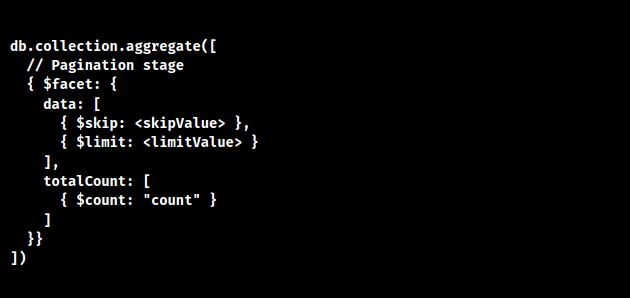We can easily achieve pagination using MongoDB Aggregate function. As part of our Server Management Service, Bobcares provides answers to all of your questions.
Pagination using MongoDB Aggregate
We can perform Pagination in MongoDB Aggregation by combining the $facet stage with the $skip and $limit operators. We can skip a specific number of records using the $skip operator. The $limit operator limits the amount of files that are returned. For example:

We can specify several aggregation pipelines inside of a single one using the $facet stage. Here, there will be two pipelines: one to fetch the data and another to get the total count.
The data pipeline obtains the paginated details. It is made up of two stages: the $skip stage and the $limit stage. The
skipValuelimitValueThe
totalCountWe will obtain the data and the total number of records in the collection by running this query. We must replace with the correct value to skip the desired number of documents, and with the desired number of documents per page.
The $facet stage needs MongoDB version 3.4 or higher. If we’re using an older version, we can obtain pagination without the $facet stage by joining the $skip and $limit stages.
[Looking for a solution to another query? We are just a click away.]
Conclusion
Pagination in MongoDB Aggregation can impact performance when dealing with large collections. To improve query run, we can create the necessary indexes.
PREVENT YOUR SERVER FROM CRASHING!
Never again lose customers to poor server speed! Let us help you.
Our server experts will monitor & maintain your server 24/7 so that it remains lightning fast and secure.







0 Comments